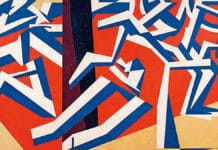A mock-epic, also known as a mock-heroic, is a form of satire that uses the elevated style and conventions of classical epic poetry to depict trivial or mundane subjects humorously. By juxtaposing grandiose language and formal structure with lowly subject matter, mock-epic poetry creates a comedic effect, often to critique or mock societal norms, human follies, or literary pretensions.
The mock-epic genre emerged during the late Renaissance and gained popularity in the 17th and 18th centuries, particularly in England and France. It often parodied the classical epics of Homer, Virgil, and Milton and contemporary literary works and styles. These poems frequently served as social commentary, critiquing the pretensions of the upper classes, the superficiality of societal norms, and the vanity of human pursuits.
Characteristics
Elevated Style
Mimics the lofty diction, elaborate metaphors, and formal structure of classical epics like those of Homer and Virgil.
Grandiose Language
Uses inflated, exaggerated language to describe trivial events, creating a humorous contrast between style and subject.
Epic Conventions
Incorporates traditional epic elements such as invocations to the muse, epic similes, catalogues, and heroic battles, but applies them to inconsequential matters.
Satirical Tone
Employs irony, sarcasm, and exaggeration to ridicule its subject, often highlighting the absurdity of human behaviour or societal practices.
Mundane Subjects
Focuses on ordinary or insignificant events, elevating them to epic proportions to underscore their triviality and mock the seriousness with which they are treated.
Themes
Vanity and Folly
Highlights the vanity and folly of human endeavours, especially those of the upper classes or literary figures.
Social Critique
Critiques societal norms, class pretensions, and the superficiality of social rituals.
Literary Parody
Parodies, classical epics, and contemporary literary works poking fun at their conventions and pretensions.
Irony and Satire
Uses irony and satire to expose the absurdity and triviality of the subject matter.Structure and Conventions
Structure
Invocation to the Muse
Begins with a formal invocation to the muse, asking for inspiration, similar to classical epics.
Epic Similes and Metaphors
Uses elaborate similes and metaphors to describe mundane events in a splendid manner.
Heroic Deeds and Battles
Depicts everyday actions as heroic deeds or battles, often with exaggerated seriousness.
Divine Intervention
Features gods, goddesses, or supernatural beings who intervene in the trivial affairs of the protagonists.
Formal Structure
Often written in heroic couplets or other formal verse structures associated with epic poetry.
Notable Examples
- The Rape of the Lock by Alexander Pope
- The Dunciad by Alexander Pope
- Mac Flecknoe by John Dryden
- Hudibras by Samuel Butler
Mock-epics play a vital role in the history of satirical literature. They demonstrate how the forms and conventions of one genre can be repurposed to create humour and critique. They continue to influence writers and remind them of the power of irony and satire in literature.




























